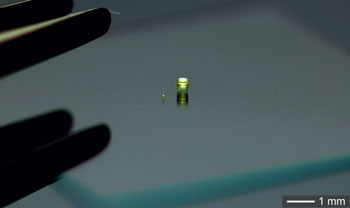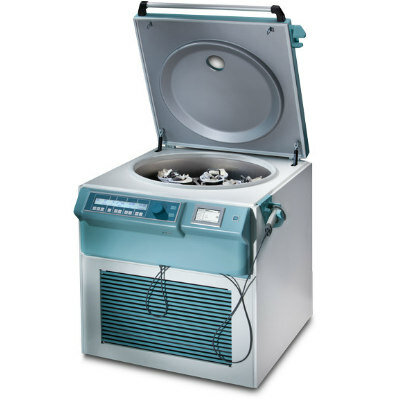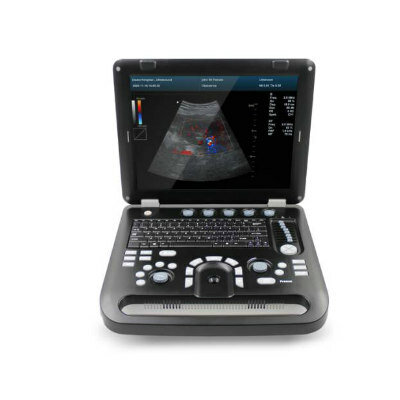Injectable Micro-Camera Could Be the Future of Health Imaging
By HospiMedica International staff writers
Posted on 14 Jul 2016
Sophisticated lenses--no bigger than a grain of salt--could serve as injectable autonomous endoscopes, claims a new study.Posted on 14 Jul 2016
Developed by researchers at the University of Stuttgart (Germany), the lens objectives are manufactured using femtosecond two-photon direct laser writing. The technology represents a novel concept in optics, taking advantage of three dimensional (3D) printing to manufacture micro- and nano-optical devices with complex lens designs, such as endoscopes, fiber-imaging systems for cell biology, new illumination systems, miniature optical fiber traps, integrated quantum emitters and detectors, and miniature drones and robots with autonomous vision.

Image: A multi-lens system with a diameter of 600 µm next to a doublet lenses with a diameter of 120 µm (Photo courtesy of Timo Gissibl / University of Stuttgart).
The compound lens is just around 100 µm (0.1 millimeters) wide on its own, and 120 µm with its casing. It can focus on images from a distance of 3.0 mm, and relay them over the length of a 1.7-meter optical fiber. It can also be directly printed onto other image sensors, such as the complementary metal-oxide semiconductor (CMOS) or charge-coupled device (CCD) sensors used in digital cameras. The study describing the new lenses was published on June 27, 2016, in Nature Photonics.
“The ‘imaging system’ fits comfortably inside a standard syringe needle, allowing for delivery into a human organ, or even the brain,” concluded lead author Timo Gissibl, PhD, of the 4th Physics Institute and Research Center (SCoPE) at the University of Stuttgart, and colleagues. “Endoscopic applications will allow for non-invasive and non-destructive examination of small objects in the medical, as well as the industrial, sector.”
Femtosecond laser writing uses a laser that emits very short pulses of light to selectively harden a light-sensitive material, which hardens only in the small 3D area where the laser light is focused. Excess material can then be washed away, revealing the 3D structure that was hardened. For manufacturing the lenses the researchers used a laser lithography system made by Nanoscribe (Eggenstein-Leopoldshafen, Germany) that is designed to write nanometer-sized structures.
Related Links:
University of Stuttgart
Nanoscribe














